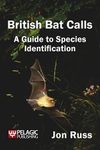By
Keith
4 Aug 2023
Written for Paperback
This book started life as a smaller monograph, self-published by the author in 2020. At 167 pages that was the germ of an idea that has now grown into a more extensive work on the species with many more photographs and tables. The structure of both books is similar and some text has been included and expanded.
Opening with a chapter looking at origins and taxonomy, we are reminded that most authorities recognise three races – although you’d be hard-pressed to tell them apart in the field. In a section on anatomy and morphology, there are examples of how the species is particularly designed for ground-feeding, with a longer tongue than most other woodpeckers, with a particularly barbed tip. The bird is then described in some detail and there is a section on moult, ageing and sexing which includes photographs of the various feathers and their positions together with excellent images of birds in the hand.
The
Picus genus is entirely an Old World group with between 13-15 members depending on who you follow. In a chapter on related species particular attention is given to Levaillant’s Woodpecker
P. vaillantii, Iberian Green Woodpecker
P. sharpei and Grey-headed Woodpecker
P. canus. Only the latter two overlap with the Green Woodpecker and both occasionally hybridise with it.
There is quite a detailed chapter on communication, describing the range of calls and how they are used. This is a species that is not known to use drumming for territorial communication purposes, but there are soft and intimate drumming sounds that occur when a pair are close together – something that few people are lucky to witness.
A major chapter on distribution assesses how the species is faring across its range. There may be as many as one million pairs in total, ranging from sea level up to 2500 m or more. Increases in the west of its range may have been offset by apparent decreases in some northerly areas. Despite expansion in Britain which saw birds move into Scotland in the 1950s, there has been a more recent downturn since a peak in about 2008. It would seem that although we regularly destroy suitable habitats for Green Woodpeckers by removing old trees, we also create feeding areas through the planting of lawns in areas where rough grassland is now scarce.
There is a lengthy section on behaviour. Green Woodpeckers are often solitary even when paired. But it is a species that reacts strongly when antagonised. Examples of reactions are given and there is additional information on activities such as bathing, anting and sunning. There is also a section on movements – although ringing results reveal that most birds remain within a few kilometres of their natal area.
The largest sections cover breeding and the use of cavities, and Gorman’s own studies reveal a strong preference in Hungary for facing a southerly direction. There are also sections on feeding, tracks and signs, predators and relationships and folklore.
This is a well-written book that brings together a wealth of information. Nobody has done more on a European scale to promote woodpecker issues than Gerard Gorman. His monograph on the Eurasian Wryneck
Jynx torquilla (
Pelagic 2022) was a great success and this book on the Green Woodpecker
Picus viridis deserves to be the same.














































